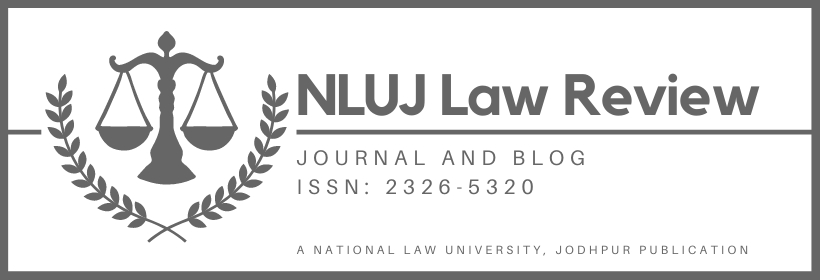The application of reservation for Other Backward Castes (“OBC”) and Economically Weaker Section (“EWS”) in the All India Quota (“AIQ”) seats for National Eligibility-cum-Entrance Test (Postgraduate) (“NEET PG”) was recently challenged in the case of Neil Aurelio Nunes and Others v. Union of India and Others. The challenge was two-fold. Firstly, it was contended that the introduction of the quotas after issuance of notification of the examination is not appropriate, and it “amounts to changing rules in the middle of the game”. Secondly, it was argued that the criteria decided for qualifying as EWS to be a beneficiary of the quota is “arbitrary” and “over-inclusive”. The Supreme Court of India (“SC”) allowed the introduction of both the quotas for this academic year to expedite the admission process. However, the fate of EWS reservations as far as admissions in the subsequent academic years are considered remains undecided as of now.
The genesis of the EWS Quota lies in the 103rd Constitutional Amendment. The only challenge which can be used to question the constitutionality of the Amendment is the Basic Structure Doctrine. To analyse whether EWS quota goes against the Basic Structure of the Constitution, it is necessary to first understand what the Basic Structure Doctrine is.
Back in 1970, the 24th, 25th, and 29th Constitutional Amendments were challenged in the landmark case of Kesavananda Bharati v. State of Kerala. Among the amendments challenged, only a part of the 25th Amendment, which restricted judicial review, was struck down because it violated the “basic structure” of the Constitution. Thus, the phrase “basic structure” is used to denote certain principles embodied in the Constitution, which are to be kept sacrosanct to preserve the essence of the Constitution. Hence, the question which comes to our mind is whether the EWS quota modifies the Constitution to such an extent to violate its basic structure.
Even though the above-mentioned did not discuss the constitutionality of the EWS quota, it is important to analyse the pertinent grounds on which the 103rd Amendment might be challenged for violating the Basic Structure of the Constitution. In this context, the first question which the author intends to analyse in this blog is whether the 50% ceiling on reservations is binding, and hence, is the EWS quota appropriate in light of the existing jurisprudence on the highly contentious subject of reservations. The second question which the author would analyse is whether reservation based solely on economic criteria is appropriate or not. Lastly, the author would analyse whether the class of individuals carved out by the Amendment suffers from over-inclusion or not.
Is the 50% Ceiling on Reservations Binding?
Currently, 49.5% of seats are reserved based on caste (27% reservation for OBCs, 15% reservation for SCs, and 7.5% reservation for STs). After the introduction of the EWS quota, which provides for 10% reservation, the percentage goes up to 59.5%. The question which arises now is if the 50% limit placed on reservations is at all binding or not.
The 50% ceiling on reservations was introduced in the case of M.R. Balaji and Others v. State of Mysore(“M.R. Balaji”). What is to be noted here is the system of reservation was treated to be an exception of the right to equality as enshrined in the Constitution, which is different from the approach of the SC in later cases. In M.R. Balaji, the SC seemed to follow the vision of formal equality, which essentially entails providing the same treatment to everyone, regardless of the inherent differences, such as the perpetual discrimination and consequent disadvantageous position of individuals due to the existence of a stringent caste system.
However, thirteen years later, the SC recognized substantive equality in the case of State of Kerala and Another v. N.M. Thomas(“N.M. Thomas”). In this case, the SC interpreted reservations as being an element of the right to equality and not an exception to it. Here we see a shift in the SC’s interpretation of equality from a formal to a substantive one, taking into account the inherent institutional and structural disadvantages experienced by individuals.
It was in the Indra Sawhney v. Union of India (“Indra Sawhney”) case which complicated the stance of the SC as far as interpretation of equality is concerned. The SC did recognize substantive equality by reaffirming the N.M Thomas, but at the same time retained the 50% ceiling on reservations, barring certain exceptional circumstances. Gautam Bhatia argues that this stand of SC is not tenable, considering the fact that substantive equality depends on the level of disparity or disadvantage present in society, it cannot be limited by a certain decided percentage (50% in this case) if inequality persists and requires a greater level of affirmative action.
In the author’s opinion, the 50% ceiling limit on reservations is an attempt by the judiciary to give priority to both formal and substantive equality. However, if there are compelling reasons behind providing reservations to a particular group of individuals, the 50% limit should not act as a restriction. The 50% ceiling, after all, has been created by the judiciary and cannot be used to restrict the “constitutional mandate of equality of opportunity”. However, whether there are any such compelling reasons behind the introduction of the EWS quota have to be examined through the next two sections; firstly, whether it is appropriate to introduce reservation solely based on the economic criteria, and secondly, whether the “class” of individuals carved out by the Amendment suffers from over-exclusion or not.
Is Reservation Solely Based on Economic Criteria Appropriate?
Since reservations are aimed at undoing the long history of discrimination and exclusion meted out to certain groups of individuals, caste has been seen as one of the most important parameters for reservations. However, there is nothing wrong with introducing reservations solely based on economic criteria. In fact, in the case of Ashoka Kumar Thakur v. Union of India(“Ashoka Kumar”), the SC said that caste does not necessarily have to be the only criteria for identifying backwardness.
The Indian judiciary has not been averse to the idea of economic reservations. In the case of K.C. Vasanth Kumar v. State of Karnataka(“K.C. Vasanth Kumar”), Justice D.Y. Chandrachud gave two tests to determine if a certain class of citizens can be considered backward or not. Firstly, the class of citizens in question should be comparable to members of the SCs and STs in terms of their backwardness. Secondly, they should satisfy the “means test” (test to determine economic backwardness) as decided by the State Government, taking into account the economic condition prevailing in society.
Justice Desai, in the same judgment, opined that the “only criterion that can be realistically devised is the one of the economic backwardness”. He warned that using caste as the only parameter for measuring backwardness would lead to an inadvertent perpetuation of the caste system. He further focussed on the point that caste is a concept rooted in Hinduism and is unknown to other religions. In the author’s opinion, Justice Desai’s conclusion about economic criteria being the only realistic parameter is, to some extent, extreme. However, it can be safely concluded that the idea of introducing reservations solely based on economic criteria is not repugnant to the existing laws.
Does the Class of Individuals Carved Out by the Amendment Suffer from Over-inclusion?
As far as the concept of equality is concerned, equal treatment must be provided to those who are similarly placed. To identify such similar groups, the State has to draw up parameters that are justifiable. It is the responsibility of the State to prevent under-inclusion or over-inclusion in such groups. One of the major grounds of criticism of the EWS quota introduced by the 103rd Constitutional Amendment is that the criteria set for getting the benefit of the newly introduced reservation are over-inclusive. If a reservation scheme suffers from over-inclusion and includes beneficiaries who, in fact, are not in need of such a scheme, the individuals who actually need the scheme to overcome their disadvantaged position are at loss. The principle of equality mandates treating equals equally, and hence, it is the responsibility of the State to carve out sub-groups of individuals which are homogeneous in terms of the level of backwardness. If an overwhelming majority of society is eligible to take benefit of the reservation scheme, then again, the individuals who are comparatively well off would be in a much better position to take advantage of the reservation and further better their position, while the individuals who are in need of the scheme do not benefit to the desired extent. In the case of Ram Singh v. Union of India too, the SC has emphasised the fact that while introducing new criteria for reservations, the State has to ensure that it reached the “most deserving” class.
“The beneficiaries of the 10% EWS Quota include those who have a family with gross annual income below Rs 8 lakh (Rupees eight lakh only). Income shall also include income from all sources, i.e., salary, agriculture, business, profession, etc., for the financial year prior to the year of application. Also, persons whose family owns or possesses any of the following assets shall be excluded from being identified as EWS, irrespective of the family income:
- 5 acres of agricultural land and above;
- Residential at of 1000 sq. ft. and above;
- Residential plot of 100 sq. yards and above in notified municipalities;
- Residential, plot of 200 sq. yards and above in areas other than the notified municipalities.”
According to an economic survey conducted in 2015, around 7.7 crore families reported an annual income of less than Rs. 6 Lakh. However, Rs. 8 Lakhs per annum has been decided as the income ceiling limit for being eligible to receive the benefit of the 10% EWS reservation introduced by the 103rd Constitutional Amendment Act. Certain surveys have indicated that an overwhelming majority of Indian households (99% approximately) fall under the EWS category as per this income ceiling limit. It further reveals that around 97.93% of upper caste households too are eligible to be beneficiaries of the EWS quota.
The income limit of Rs. 8 Lakhs is much higher than the income limit fixed for demarcating population living below the Below Poverty Line (“BPL”). It might be argued that reservations are not poverty alleviation programmes, and hence the criteria for demarcating the beneficiaries of the EWS quota in this particular context can very well be different from the criteria which are used to demarcate population living below the BPL. However, we have to remember that the major objective of the reservation system is to reach certain specific sections of society who are the most disadvantaged and bring them to par with others. It is logical that the EWS reservation should aim to benefit the poorest of the poor since only economic criteria are being taken into account.
Another aspect that we need to consider is whether there is an adequate representation of the class of citizens which the EWS Quota seeks to benefit. As per the data released by the Press Information Bureau, around 52% of employees in 78 government ministries and departments belong to the general category. As per the data from the All India Survey on Higher Education, around 43% of students belong to the general category. Even though data available does not specifically point out the proportion of representation of people belonging to the general category but falling within the bracket of EWS as described, it can be safely concluded that they are not underrepresented in any way as the overwhelming majority of the population falls in the EWS category (as shown above). Not only that, data reveals that around 28% of the students enrolled in 445 institutions ranked by National Institute Ranking Framework (“NIRF”) belong to the “Economically Backward Class” (“EBC”). Interestingly, the threshold for maximum income used for demarcation of EBC is much lower than Rs. 8 Lakhs. Hence, we can safely conclude that currently, the class of individuals carved out by the Amendment suffers from over-inclusion.
Conclusion
In the context of the recent controversy about the implementation of EWS and OBC reservations in AIQ seats in the NEET PG examination, the question of the constitutionality of the newly introduced EWS quotas naturally arises. The EWS quota has been introduced through the 103rd Constitutional Amendment. There are three issues that make the amendment constitutionally suspect. Firstly, the fact that the EWS quota would push the total reservation above the ceiling limit of 50% makes it important to analyse whether the ceiling limit is inviolable at all. Secondly, the fact that this quota is solely taking economic criteria into consideration needs to be discussed because the notion of “backwardness” has generally been construed in relation to caste. Thirdly, the criteria set for carving out EWS seems to be over-inclusive.
As far as the 50% ceiling limit is concerned, it has been the result of an attempt by the judiciary to accommodate the competing principles of formal equality and substantive equality. It was introduced in the case of M.R. Balaji and reaffirmed in the case of Indra Sawhney. However, in Indra Sawhney, the SC did recognize that a need might arise to exceed the 50% limit in case of “extraordinary circumstances.” Hence, if there is a compelling need to give reservations to a disadvantaged group to bring them at par with others, then the 50% limit on reservations can be exceeded.
Coming to the second issue, introducing reservations on the basis of economic criteria alone is not repugnant to the law. As per the two-fold test to determine backwardness, laid down by Justice Chandrachud in the K.C. Vasanth Kumar case, firstly, a class of citizens should be as backward as the Scheduled Castes and Scheduled Tribes, and secondly, should satisfy the means test set by the State Government. However, the problem arises when we look at the criteria set by the amendment for demarcating EWS. Data from various sources point to the fact that not only is the criteria over-exclusive, but there is no apparent under-representation of the intended beneficiaries in public employment and higher education. Hence, even though the introduction of the EWS quota is conceptually sound, the criteria set to demarcate the class of intended beneficiaries need to be reconsidered.
This article is authored by Bipasha Kundu, student at West Bengal National University of Juridical Sciences, Kolkata.



